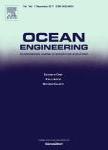版权所有:内蒙古大学图书馆 技术提供:维普资讯• 智图
内蒙古自治区呼和浩特市赛罕区大学西街235号 邮编: 010021

作者机构:Norwegian Univ Sci & Technol Dept Ocean Operat & Civil Engn Alesund 6009 Norway
出 版 物:《OCEAN ENGINEERING》 (海洋工程)
年 卷 期:2024年第295卷
核心收录:
学科分类:07[理学] 0707[理学-海洋科学] 0824[工学-船舶与海洋工程] 0814[工学-土木工程]
主 题:Ship roll motion prediction Encoder-decoder Bi-LSTM Teacher forcing
摘 要:The safety of maritime operations has become a paramount concern with the advancement of intelligent ships. Ship stability and safety are directly impacted by roll motion, making the prediction of short-term ship roll motion pivotal for assisting navigators in making timely adjustments and averting hazardous roll conditions. However, predicting ship roll motion poses challenges due to nonlinear dynamics. This study aims to predict short-term ship roll motion by leveraging the encoder-decoder structure of Bidirectional Long Short -Term Memory Networks (Bi-LSTM) with teacher forcing. The model is accomplished by employing an encoder- decoder structure to map input sequences to output sequences of varying lengths, and employing teacher forcing to enhance the network s ability to extract information. To refine and analyze the prediction model, aspects such as the quantity of training data to guarantee model generalization, establishing apposite length relationships between input and output sequences, and assessing the model performance in various sea states are investigated. Additionally, comparative experiments assessing roll motion prediction for intervals of 10s, 30 s, 60 s, and 120 s are conducted to substantiate the necessity and effectiveness of the proposed network. The dataset originates from a commercial professional simulator developed by the Norwegian company Offshore Simulator Center AS (OSC).